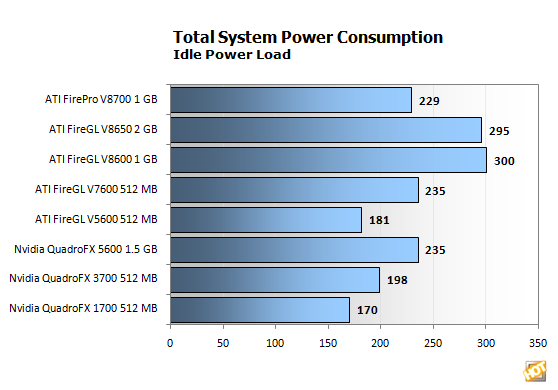ATI FirePro V8700 Workstation Graphics Card
Power Consumption
With a new GPU under its hood, one which is made on a more modern manufacturing process and has a much smaller overall die size, we were immediately curious about power consumption. In terms of its specifications, this new card should consume less power compared to its older brothers, but that's not a certainty, as the RV770 can consume a lot of power and produce a lot of heat when really pushed.
To measure power consumption, we broke out our standard hardware AC wattage meter and hooked it up to our test system. Our wattage meter tests the entire system's power consumption, not just the graphics card. (You can see our full testbed details on the following page). We tested keeping the system idle at the Windows desktop and maximizing it with intensive 3D scenes designed to push the GPU to its maximum power threshold. Here's what we saw.
|


The results are surprising on both fronts. When the FirePro V8700 is idling, it consumes substantially less power than its competition. In fact, the high-end V8700 card is consuming less power at idle than their prior generation mid-range card, which is definitely progress.
At full load, however, this card can consume quite a bit of power. Our tests showed the FireGL V8700 card consuming almost the exact same amount of power as their previous generation monster V8650 card. The V8700 does have a higher-clocked core, but we would have expected a drop considering the changes in manufacturing process and PCB size. In any case, at full load, the FirePro V8700 can use quite a lot of power, but without any major increases in noise, and that's really an important thing to note. It's a high-end card, and it has high-end power consumption ratings - it's not surprising.






